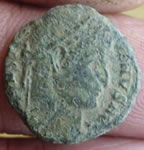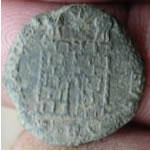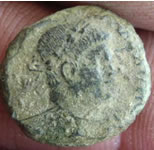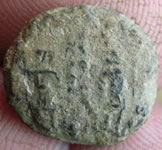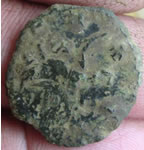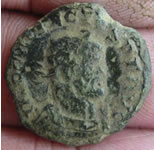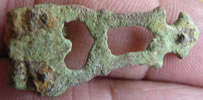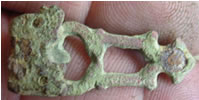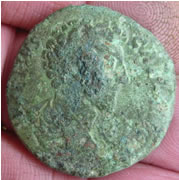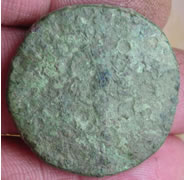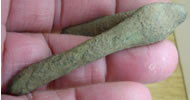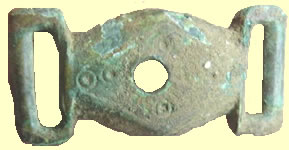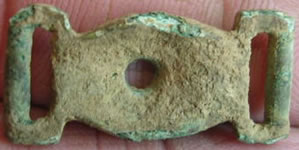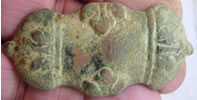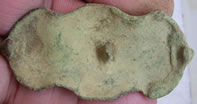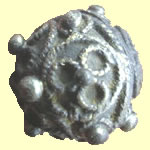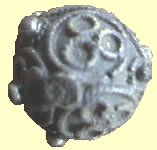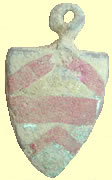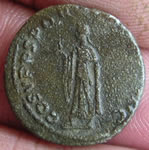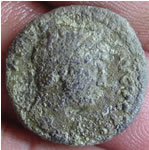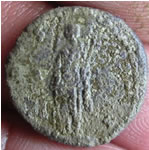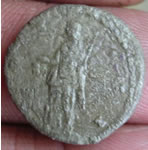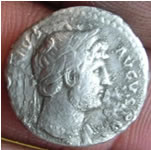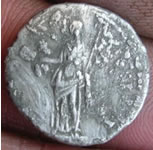

Metal detecting holidays in England with the World's most successful metal detecting club.
Twinned with Midwest Historical Research Society USA
Sept 2007 finds page 2 |
|||
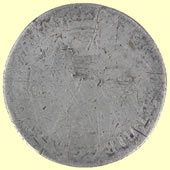  |
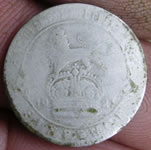 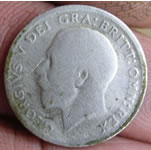 |
||
|
1696
Willliam III milled silver shilling (12 pence) Later harp small crown
3rd bust type |
1921
George V milled silver shilling |
||
|
this is Constantine
I "The Great", dating to the period 325-27 A.D. Precise
dating will depend on a bit of cleaning of the exergual mintmark. |
|||
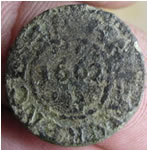 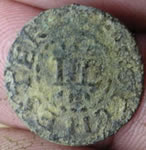 |
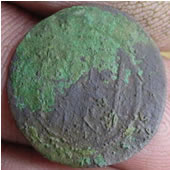 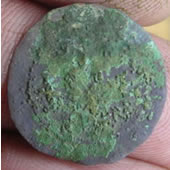 |
||
|
1662
John Lawerence Colchester hammered copper trade farthing |
1669
Manningtree - Carter Henry, surgeon (CHYRVRGEON) 'His halfpenny' hammered
copper trade token
Volume II - 1319a Barber/Surgeon |
||
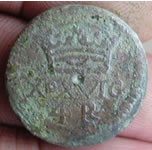 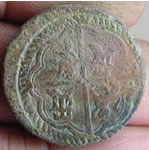 |
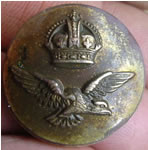 |
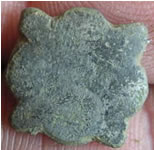 |
|
|
Superb,
French - Two castle and 2 Lions( arms of Spain) 4 reales coin weight
13.06g, 22.12mm XX VIG 4R ( 5 gr) |
WWII Royal Air Force Back mark Kenning |
17thC mount with 2
integral lugs |
|
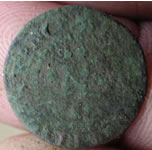 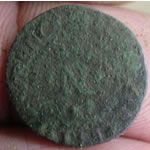 |
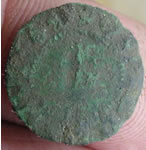 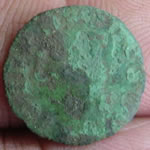 |
||
|
17thC
hammered copper trade token - Nathaniel Lawrence of Colchester - Not
dated type
|
1655
Henry Lamb of Colchester hammered copper trade farthing |
||
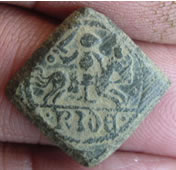 |
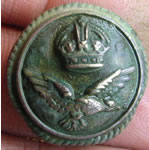 |
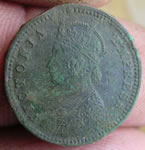 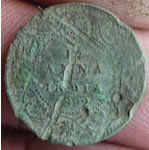 |
|
|
Stunning, Figure on horseback type. These are Low countries or German made coin weights for the low countries Rijder, rijdergulden 15.1 mm, 3.32g |
RN
Air Service In use WWI Officers Tunic Button Officers RHS Shldr Button |
1892
Victorian 1 Anna Indian coin |
|
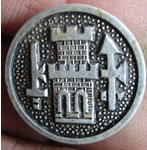 |
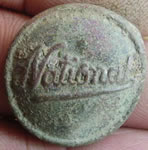 |
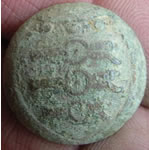 |
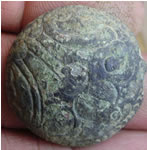 |
|
20thC
button |
20thc
National bus service button |
18thC
Royal Artillery button |
17thC
hand decorated button |
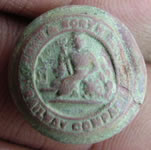 |
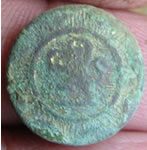 |
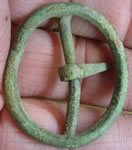 |
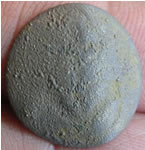 |
|
Northern
Railway company button |
Military
?? |
1350-
1650 buckle |
Navy
Capt / Commander - 1774-1787 |
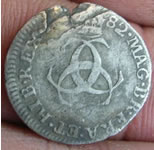 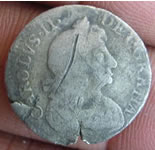 |
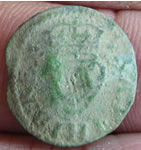 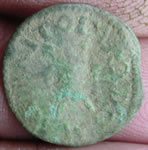 |
||
|
1682
Charles II milled silver 3 pence |
1614-25
James 1st hammered copper farthing Type 3c Mintmark key
Genral type Obv. IACO D G MAG BR (IT) Rev. FRA ET HIB REX |
||
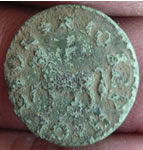 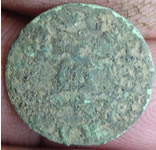 |
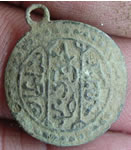 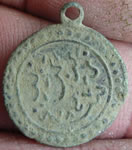 |
||
|
1664
Joseph Gleson of Dedham Copper trade farthing
|
Religious
medallion
|
||
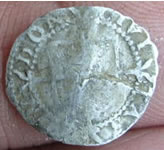 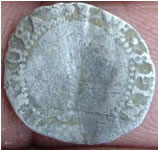 |
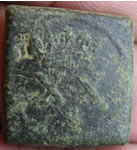 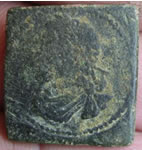 |
||
|
16thC
Elizabeth 1st hammered silver penny |
1619-25
Gold Laurel of James 1st, 3rd coinage coin weight XXs - 9,1g (actual
weight 8.46g)
|
||
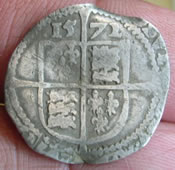 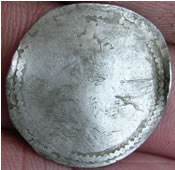 |
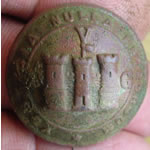 |
 |
|
|
1571
Elizabeth 1st hammered silver 6 pence |
5th Dragoon guards button WWII type 1935-1952 |
RN
Capt / Commander - 1901 Other Ship's Officers - 1901 In use 1901 - 1952 |
|
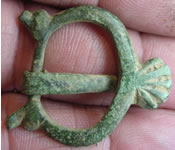 |
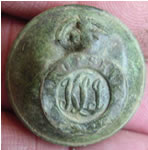 |
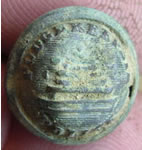 |
|
|
1550
-1650 Buckle |
The
Kings (Shropshire Light infantry |
POUGEKEEPSIE POLICE ? button |
|
|
|
|||
|
Another nice 4thC Roman find 1.71g,14.57mm sent off for ID This
one doesn't really provide enough clear obverse legend to be certain
who it is - the "suspects" in approximate order of liklihood
would be: |
|||
 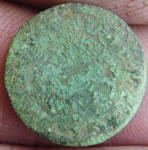 |
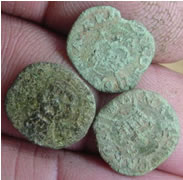 |
||
|
1664
Joseph Gleson of Dedham Copper trade farthing
|
Lots
of 1634 Charles 1st hammered copper rose farthings turning up
|
||
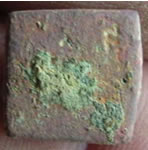 |
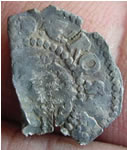 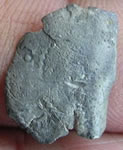 |
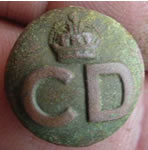 |
|
|
18thC
apothecary weight |
16thC
Elizabeth hammered silver half groat |
WWII
Civila defence button |
|
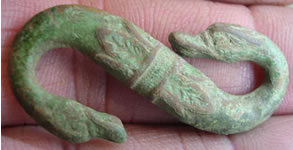 |
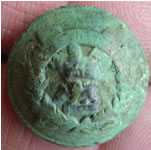 |
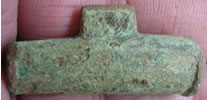 |
|
|
16th/17th
Duck head S buckle |
UNITED
KINGDOM The London Scottish In use 1860 - 1901 Maker - Unknown |
18thC
ramrod guide |
|
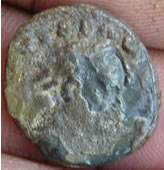 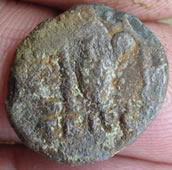 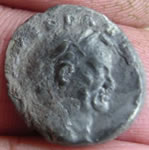 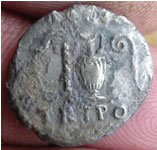 |
|||
|
Despite
how badly encrusted this is, it's easily identified. It's Vespasian
- a silver denarius of course - dating to 72/3 A..D. The reverse shows a lineup of sacrificial tools and vessels symbolic of the pontificate and augurate - (simpulum, sprinkler, jug and lituus) - above them, and not really visible on yours at the moment, it should read: "AVGVR" - Below the implementia, it reads: "TRI POT" The obverse should, when cleaned, read: "IMP CAES VESP AVG PM COS IIII". Laureate head right. RIC II 42, RSC 45 |
|||
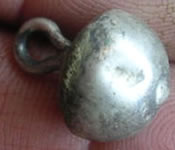 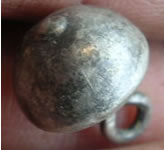 |
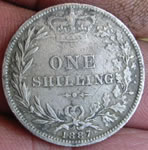  |
||
|
17thC
silver button - reported as treasure |
1887
Victorian milled silver shilling |
||
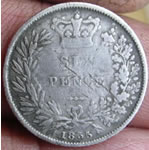 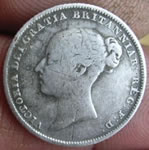 |
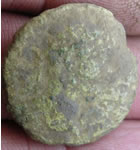 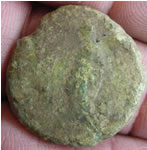 |
||
|
1855
Victorian milled silver sixpence |
1stC
Roman bronze in poor shape |
||
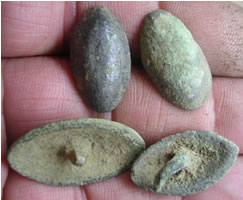 |
 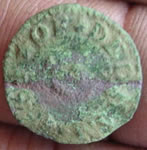 |
||
|
4-
17thC copper alloy oval mounts with single integral lugs |
1664
Joseph Gleson of Dedham Copper trade farthing
|
||
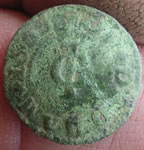  |
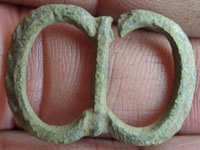 |
||
|
1664
Joseph Gleson of Dedham Copper trade farthing
|
16th/17thC
Double D buckle |
||
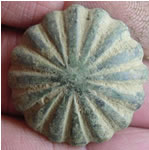 |
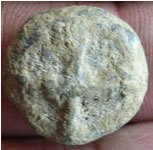 |
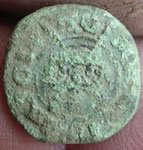  |
|
|
Roman military mount |
15thC lead long cross token |
1634
Charles 1st hammered copper rose farthing |
|
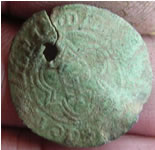 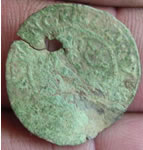 |
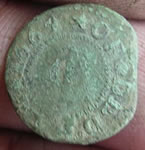 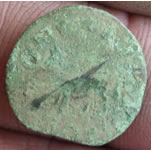 |
||
|
1586
Hans Krauwincel II Rose orb Jeton
HANNS KRAVWINCKEL IN NVRENB |
1664
Joseph Gleson of Dedham Copper trade farthing |
||
|
|
|||
|
Roman
bronze Id'd 21.17mm, 2.58g it's an antoninianus of Tacitus 275-6 AD
Eventually,
I was able to determine that what we have here is an AE antoninianus
or "ant" of Tacitus, 275-6 A.D. This short-lived, elderly
(75 yr-old) emperor succeeded Aurelian and very quickly came to the
end of his own days after joining his army on campaign - the rigors
of life in the field quickly proved his health to be more delicate
than he thought. |
|||
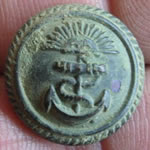 |
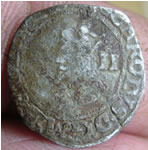 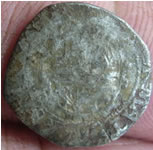 |
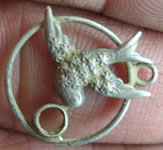 |
|
|
P&O Line In use 1920 - 1940s Maker - Unknown |
1625
Charles 1st hammered silver half groat (2 pence) |
Victorian
silver bird charm or ear ring hoop |
|
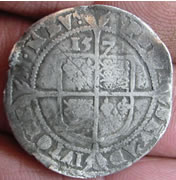 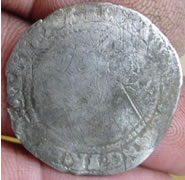 |
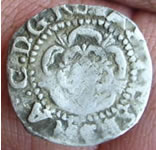 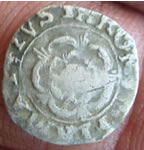 |
||
|
1572-3
Elizabeth 1st hammered silver sixpence - 3rd issue Ermine mintmak |
1603
James 1st hammered silver penny, group A without bust Rose each side
|
||
  |
|
||
|
1199AD
King John hammered silver cut half penny
|
C17thC
Small
copper alloy chest hinge with 5 rivet fixings |
||
 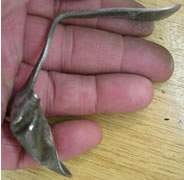 |
 |
||
|
18thC
Solid silver spoon |
18thC
silver thimble |
||
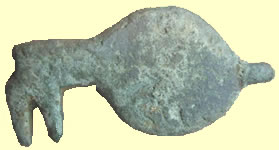 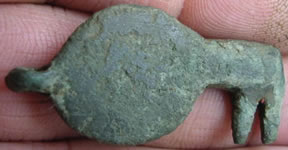 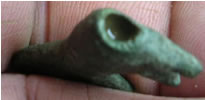 |
|||
|
C10thC
Saxon bronze key 10.41g, 40.88mm Lx19.58mm W x 6.30mm T |
|||
|
|
|||
|
Another huge thick 1stC Roman in amazing shape - sent to Mark for ID 19.24g, 30.75mm dia 4.22mm thick Today's
sestertius is a fairly young Commodus - but not as young as I had guessed
at first glance.
Commodus is one of those "Royal Brats", who, like Caracalla, had a progression of realistic portraiture on his coinage - everything from a baby-book portrait to a brutally frank, "mature" image of a madman, just before his death at the ripe old age of 29. Caracalla looks every bit the cruel, brother-murdering, dissipate despot in his final coin portraits. Commodus' portrait-artists were a little kinder towards the end of his rule, but only slightly - this, however, isn't really the point today - just cited to let you know that on some Roman coins, not only are the portraits so realistic as to have you recognizing Hadrian's or Septimius Severus' look-alikes on the street today, but some of the longer-lived emperors who began their careers as child-Caesars can nearly be dated at a glance from the progression of the portrait - not unlike recognizing cars' model-years in the 1950's by the cut of this year's tailfin... Oh dear, I'm showing my age - and beginning to wander ( ;<{D}. At any
rate, and returning to the coin at hand, so to speak, this is Commodus
at the age of 22 or 23, in 183-4 A.D.. He was born in 161 A.D. the same
year his father - Marcus Aurelius - succeeded Antoninus Pius after a
very long term as Caesar himself. Commodus' first, baby-faced coin-portraits
appear when he is only 12. Sestertius,
Mint of Rome, 183-184 A.D. Mark |
|||
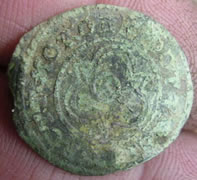 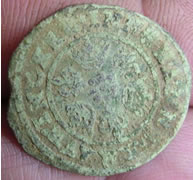 |
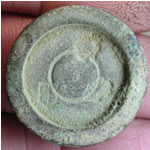 |
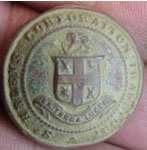 |
|
|
1586
Hans Krauwincel II Rose orb Jeton
HANNS
KRAVWINCKEL IN NVRENB |
1835
Lincoln hallmarked trade weight |
St
Helen's Corporation transport button |
|
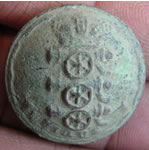 |
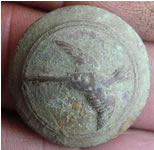 |
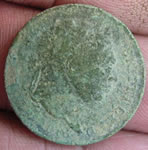 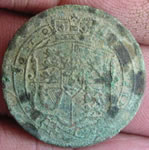 |
|
|
Royal
Artillery button
Dates - 1840 - 1855 |
19thC
hunting button |
1816
George III milled silver shilling forgery
|
|
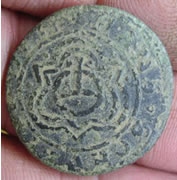 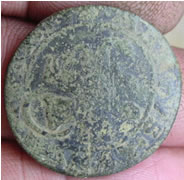 |
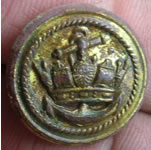 |
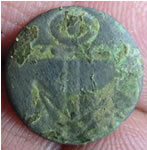 |
|
|
1553- 86 AD Hans Schultes I ‘Lion of St Mark’ Jetton obv Lion of St mark standing left, nimbate and winged, holding book of the Gospels in right fore paw: Lions halo orjecting into the margin and surmounted by a cross + SANT:MARGVS:NORPED Rev Imperial orb surmouned by cross patty HANS rosette SCHVTLTES rosette NORNBE Ref Mitchiner 1382 |
Britain's
Merchant Navy Generic Design Issue In use 1900 - 2000's Bliss Bros Ltd Rd 665050 |
Early
Navy button - not check ref books yet |
|
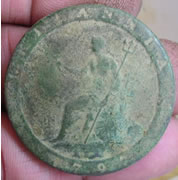 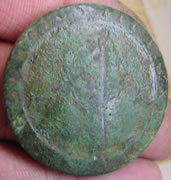 |
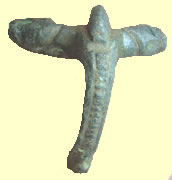 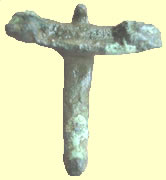 |
||
|
1797
George III Cartwheel penny in great shape
|
1stC
Roman Dolphine type fibula brooch
|
||
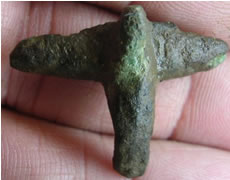 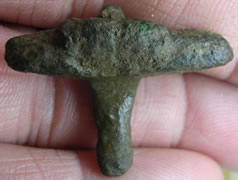 |
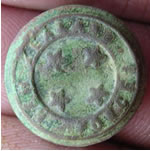 |
||
|
1stC
Roman Dolphine type fibula brooch
|
New
Zealand Police button |
||
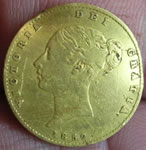 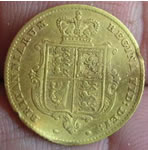 |
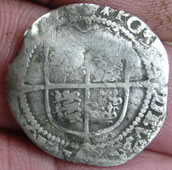 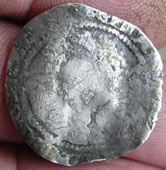 |
||
|
1852
Victorian gold half sovereign |
1572-3 Elizabeth 1st hammered silver sixpence 3rd Issue Ermine mintmark |
||
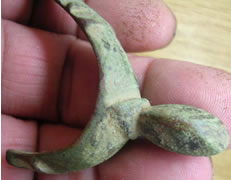  |
|||
|
16thC prick spur
|
|||
  |
|
||
|
Excellent
16thC
openwork clothing fastener |
18thC
Bayonet frog - not a type I have seen before as it appears to clip onto
a belt |
||
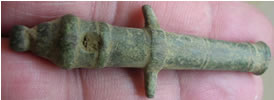 |
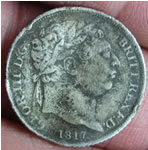 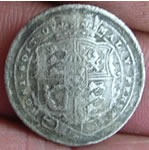 |
||
|
18thC
toy cannon |
1817
George III milled silver 6 pence |
||
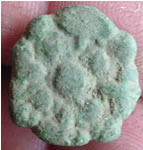 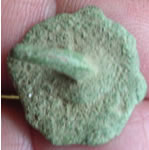 |
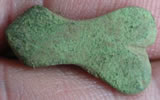 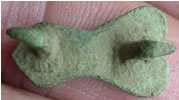 |
||
|
Circa
15th to 17th century
Copper-alloy stud or tack; circular, flat; pointed shank. Decoration: a central rosette |
16th/17thC
Asymmetrical, flat mount with two integral pointed lugs |
||
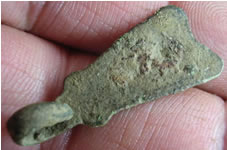 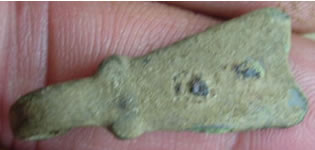 |
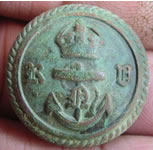 |
||
|
Circa
16th century
A mount with a hooked end on which a captive plain copper-alloy ring is usually fitted. The mount is generally of trapezoidal shape with a V-shaped top edge and a transverse groove above the hook. It has two rivet holes on the vertical centre-line. |
RN
(Canada) Vol. - 1914 R.N.V. In use 1914 - 1920 Maler = No maker's name Normal - Right exit for rope |
||
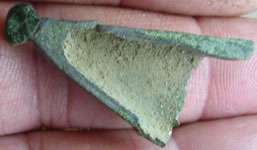 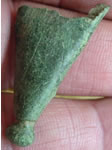 |
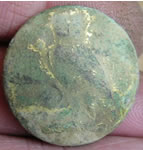 |
||
|
Medieval
dagger chape fragment |
19thC
Livery button |
||
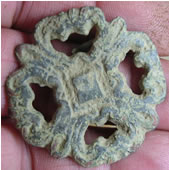  |
 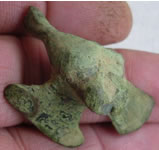 |
||
|
Circa
15th to 17th century
Copper-alloy mount; circular, flat;2 integral lugs. Decoration: floral |
Roman
centurion standard eagle mount
|
||
  |
 |
||
|
Georgian
combination seal ring and pipe tamper - neat relic |
18thC
toy cannon |
||
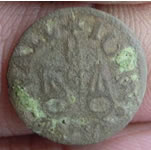  |
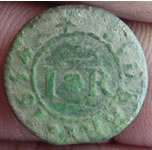 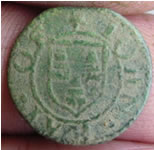 |
||
|
1652
John Vanewall of Harwich Essex , (W/IM) hammered copper trade farthing |
Very
interesting unlisted 1654 John Ray of Sudbury (spelt SUDBBURY) Suffolk
hammered copper trade farthing Norweb 4482 (1667) |
||
 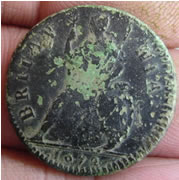 |
|||
|
Stunning
1672 Charles 1st copper halpenny - best I have ever seen |
|||
|
|
|||
|
Roman
bronze decorated latch key with suspension hole 48.26mm L x 8.83mm x
T x 12.45mm H, 17.62g |
|||
|
|
|||
|
Saxon period buckle - classic circle decoration - one for the museum 4.73g, 26.71mm L x 12.57mm W |
|||
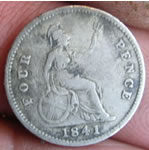 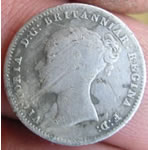 |
  |
||
|
1841
Victorian milled silver 4 pence |
AD
1189 Richard 1st hammerd silver short cross cut halfpenny |
||
 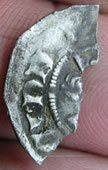 |
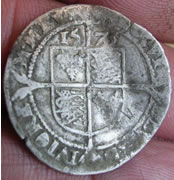 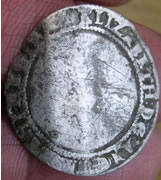 |
||
|
14thC
medieval hammered silver half groat fragment |
1575
Elizabeth 1st hammered silver six pence - 3rd issue |
||
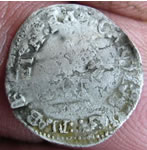 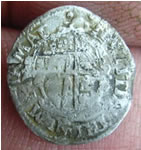 |
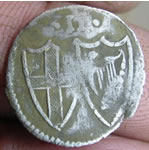 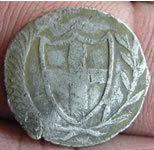 |
||
|
1631
-2 Charles 1sr hammered silver penny- Tower mint under Charles |
1649
Commonwealth hammered silver two pence
|
||
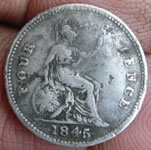 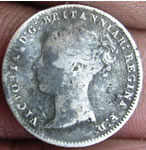 |
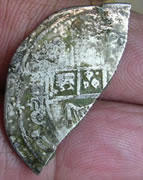  |
||
|
1845
Victorian milled silver 4 pence
|
This would have been a monster find in one piece 1638 Charles 1st milled silver crown - first of the milled test pieces |
||
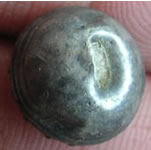 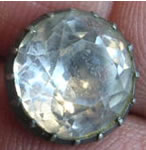 |
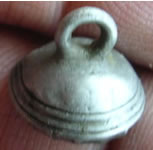 |
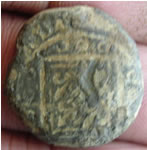 |
|
|
Silver
mount with glass or stone - reported to museum as potential treasure
as it has some age. |
Medieval
silver hawking bell fragment - reported to museum as potential treasure |
17thC
Dutch bale seal |
|
|
|
|
||
|
17th/18thC
Large decorated copper alloy mount with 3 integral lugs |
Solid silver decorated pin head probably 15th/16thC Tudor - reported to museum as treasure 1.66g, 9.56mm dia |
||
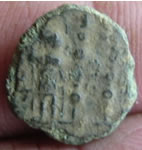 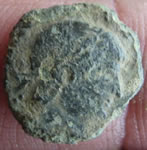 |
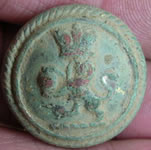 |
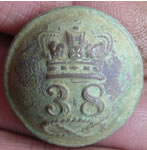 |
|
|
4thC
Roman sent for ID 1.13g, 14.02mm |
UNITED
KINGDOM MN - Cunard Line In use 1860 - 1901 Maker - Unknown |
38th Regiment of foot button Staffordshire Regiment |
|
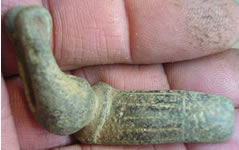 |
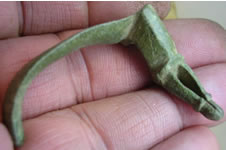 |
||
|
17thC spur |
18th/19thC spur |
||
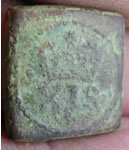 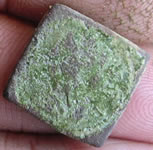 |
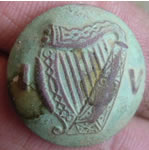 |
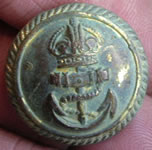 |
|
|
James 1st gold angel 2nd coinage revalued - XIs |
1920
Irish volunteers button |
Navy
- not checked books yet |
|
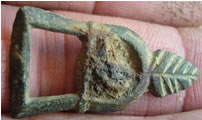 |
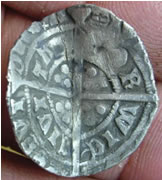 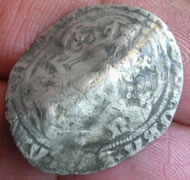 |
||
|
16th/17thC
spur buckle
|
1465
Edward IV silver groat (4 pence) - Norwich mint N on breast - quatrefoils
by neck NORWIC
|
||
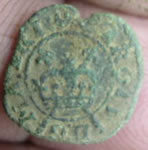 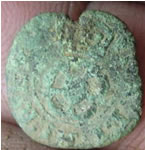 |
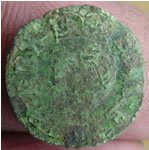 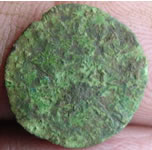 |
||
|
1634
Charles 1st hammered copper rose farthing Type 2 |
1614-25
James 1st hammered copper farthing Type 3c
General type Obv. IACO D G MAG BR (IT) Rev.
FRA ET HIB REX |
||
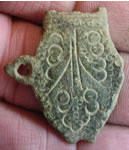 |
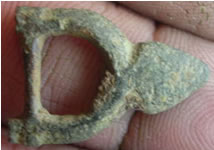 |
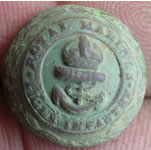 |
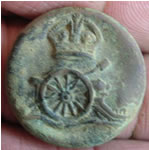 |
|
17thC
decorated clothing fastener |
16th/17thC
spur buckle |
WWII
Royal Marines Infantry |
Royal
Artillery button |
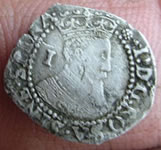 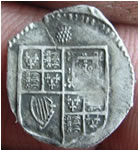 |
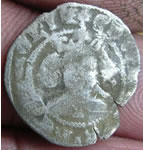 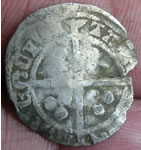 |
||
|
Really
chrisp 1603-4
James1st
hammered silver penny - thistle mintmark 1st coinage |
1272
Edward 1st hammered silver penny (41) |
||
|
Robert FitzWalter - enameled 13thC heraldic shield pendant Or a fess between two chevrons gules Robert le FizWater
|
|||
|
In 1206
King John refused to agree to Pope Innocent III's choice of Archbishop
of Canterbury after his own choice had been rejected. Because the king
still challenged the pope, in 1207 he was excommunicated (not allowed
to be a member of the church) and an 'interdict' was issued by the pope.
Because of the interdict, the churches closed and their bells fell silent. With the church doors locked, services could not take place. The dead had to be buried in fields instead of in holy ground. People could not marry in church and baptisms had to be carried out in church porches. King John's excommunication also let off the barons from their oath of loyalty to him. Because they might rebel against him at any time, King John acted quickly against anyone who looked as though they might be disloyal. We know from the Medieval Chronicles that Robert FitzWalter, the 3rd Lord of Dunmow Castle, was accused of plotting to kill King John during a rebellion in 1212. The rebellion was quickly quashed. FitzWalter was outlawed and fled to France. Eventually in 1213, the Pope told King Philip of France that he could invade England and King John finally agreed to the Pope's terms including his choice of Archbishop. Robert FitzWalter returned home and, with the other Barons, he made peace with King John. This did not last long, however. It was found that FitzWalter was still plotting against the King and urging for the government to be reformed. Because of this, his home in London, the Castle of Baynard, was almost entirely destroyed |
|||
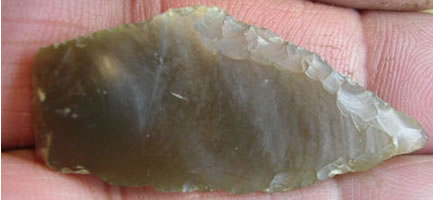 |
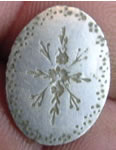 |
||
|
8000
to 12000 BC flint arrow head |
Real
nice Georgian silver decorated cufflink |
||
  |
|||
|
Saxon
C600 - 775 AD Silver Sceat
1.16g, 10.98mm Series D (Type 2c) (North 168) EMC 2007.0239. |
|||
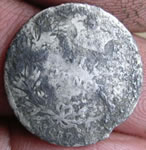 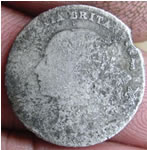 |
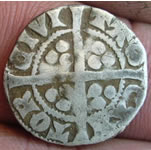 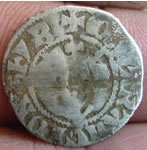 |
||
|
1852
Victorian milled silver sixpence |
1327 - 1335 Edward III Florin hammered silver penny, first coinage EDWAR ANGL DNS HYB CIVITAS CANTOR - Canterbury mint |
||
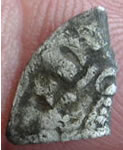 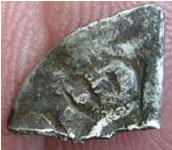 |
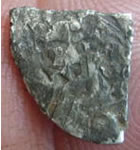 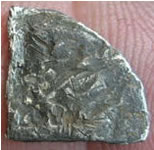 |
||
|
1247
Henry III hammered silver cut 1/4 penny (farthing) |
Medieval
hammered silver cut 1/4 penny (farthing)
|
||
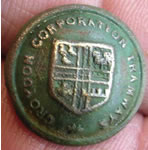 |
  |
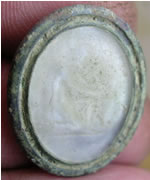 |
|
|
Croydon
Corporation Transport button (London) |
Excellent
16thC
openwork clothing fastener
|
Georgian
intaglio brooch with man kneeling and working |
|
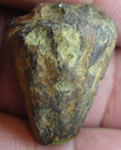 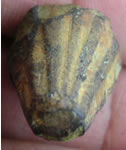 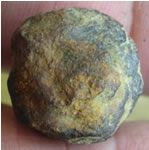 |
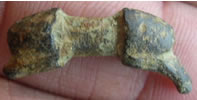 |
||
|
Early
bronze decorated dagger pommel - post Roman - one for the museum
|
Bronze
age Terret ring fragment |
||
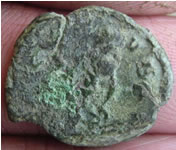 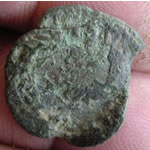 |
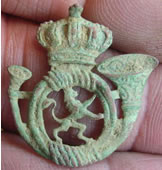 |
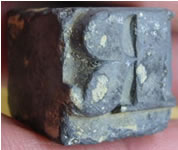 |
|
|
Chrispy
Roman bronze - sent for possible ID |
Excellent
Military badge - not researched it yet |
19thC
printing block 'R' |
|
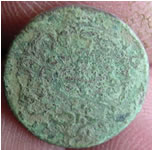 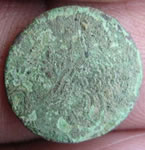 |
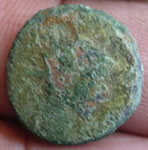 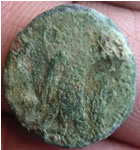 |
||
|
Copper
coin - no idea as to it's ID yet
|
4thC
English Roman barbarious radiate coin
|
||
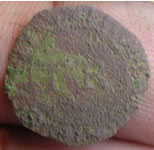 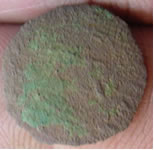 |
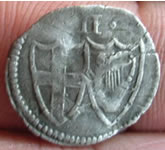 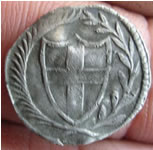 |
||
|
17thC
Thomas Reynolds bays maker of Colchester hammered copper farthing -
undated type |
1649
Commonwealth hammered silver half groat ( 2 pence) |
||
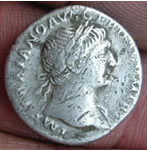 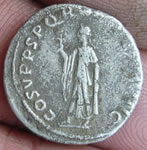
'This
is a denarius of Trajan (98-117 A.D.) From the "COS V" (5th
consulship) in the reverse legend, as well as the form of the obverse
legend we can date it to the period of 103-111 A.D. Further research
and hoard evidence on the series dates this particular piece to 109
A.D. 3.04g,18.24 |
|||
|
Cleaned using the oil and lemon juice 'cooked' method |
|||
|
Your piece (a) isn't
quite as clear, but it's still easily recognizeable as a denarius of
Hadrian, Trajan's successor, who reigned 117-138 A.D. This is from the
enormous COS III series. Hadrian was consul only three times so almost
all the coins from the end of his period have COS III in their reverse
legends - those with only COS III as reverse legend date to 125-128
A.D. As I look at further references, I'm leaning more towards Libertas - we'll have to see whether she's holding out that right hand and if so, what's in it. 2.88g, 17.65 |
|||
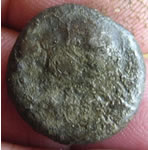 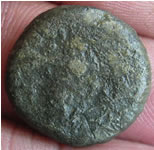 |
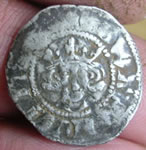 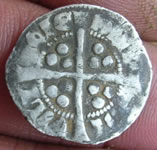 |
||
|
Silver Roman coin sent for ID - 4.72g,18.99 Your piece is going to have to get a little cleaner or show a little more detail before I'll go out on any limbs with it, but if I'm interpreting what I believe to be the obverse correctly, I'm going to make a wild guess it's a Flavian - more likely Vespasian or Titus than Domitian - more than that I cannot say at this time. Mark |
1272 Edward 1st hammered silver penny - Bury mint EDWAR ANGL DNS *** |
||
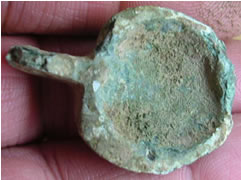 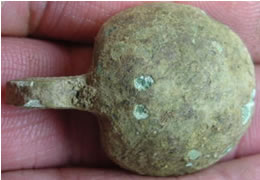  |
|||
|
Roman
period bowl with hanger 35.86mm L x 24.99 mm W |
|||
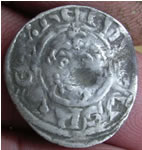 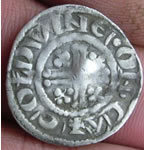 |
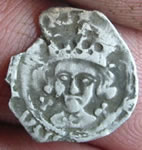 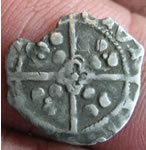 |
||
|
Richard 1st (1189 -1190 AD ) hammered silver short cross penny Class 2 X pomme Canterbury mint - Moneyer GOLDWINE |
Edward
IV 1461-1470 hammered silver penny - Trefoils each side of neck - Quatrefoil-with-pellet
at centre of reverse
|
||
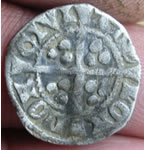 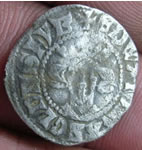 |
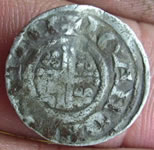 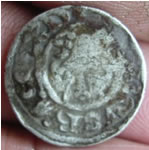 |
||
|
1344 - 1351 AD Edward III florin type hammered silver penny EDWAR R ANGL DNS HYB CIVI TAS LONDON - London mint |
1242-1247 Henry III hammered silver penny Class 7 Canterbury mint - Moneyer IOAN CHIC |
||
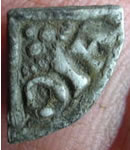 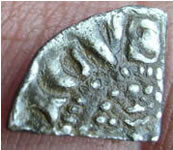 |
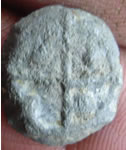 |
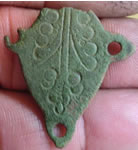 |
|
|
1242
Henry III hammered silver cut qtr penny (farthing) |
15thC Lead token - long cross and pellet type |
17thC
clothing fastener |
|
 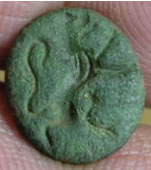 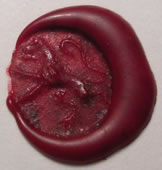 |
 |
||
|
Medieval
seal matix with beast impression |
Strapend
? |
||
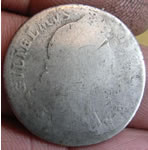 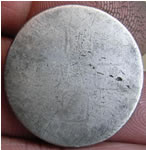 |
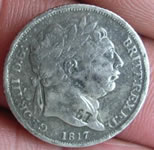 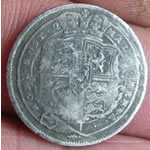 |
||
|
1696
William III milled silver shilling |
1817
George III milled silver sipence |
||
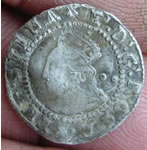 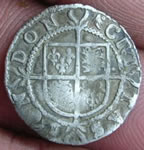 |
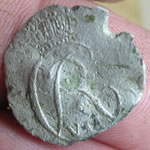 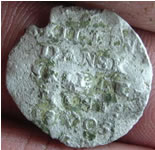 |
||
|
1560-1
Elizabeth 1st hammered silver half groat (2 pence) - 2nd issue |
1805 Christian VII Skilling, DANSK silver coin This is 2 Skilling (if it weighs 1.5
g) from Norway under the rule of the Danish King Obverse: Crowned monogram of King
Christian VII IGM is the mintmaster Johan Georg Madelung 1797-1806. |
||
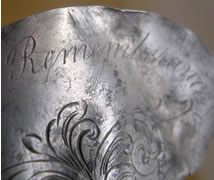 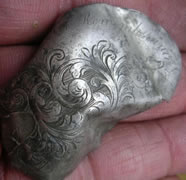 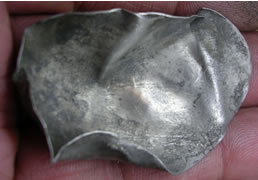 |
|||
|
18thC
Decorated silver spoon bowl inscribed - In Rememberance of Eliz Reitzel |
|||
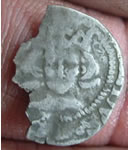  |
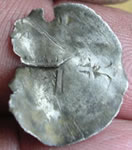 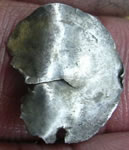 |
||
|
1422
Henry VI hammered silver penny |
1554
Mary hammered silver half groat (59) |
||
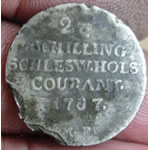 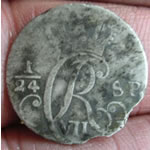 |
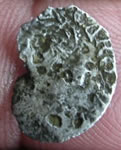 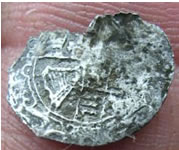 |
||
|
1787 Denmark Christian VII This is a 2 1/2 Schilling (or 1/24 Speciesthaler) from Schleswig-Holstein under the Danish King Christian VII. This is 37.5% silver and should weigh 2.8 g. Obverse: Crowned monogram
of Christian VII dividing value (1/24 - SP) MF is the mintmaster
Michael Flor |
1625
Charles 1st hammered silver penny (58) |
||
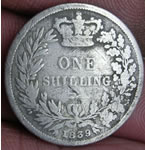 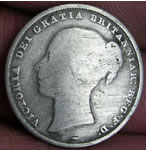 |
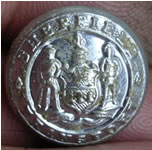 |
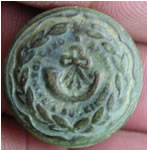 |
|
|
1839
Victoria milled silver shilling |
Sheffield
Transport |
Oxfordshire
and Buckinghamshire Reg |
|
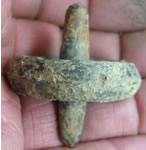 |
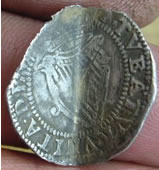 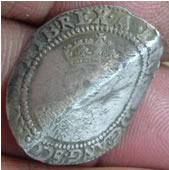 |
 |
|
Toy spinning
top |
1604 - 7 James 1st Irish hammered silver 6 pence - 2nd coinage Rev TUEATUR UNITA DEUS - May god guard the Kingdom Obv - IACOBUS D.D. ANG SCO FRA ET HIB REX -James by the grace of God King of England Scotland France and Ireland |
17thC
clothing fastener |
|
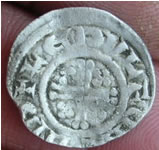 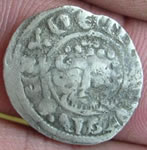 |
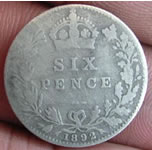 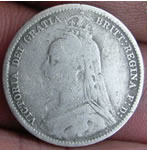 |
||
|
1242-1247 Henry III hammered silver penny Class 8b Oxford Mint - Moneyer HENRI |
1892
Victorian milled silver sixpence |
||
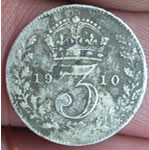 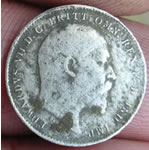 |
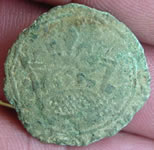 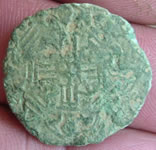 |
||
|
1910
Edward VII milled silver 3 pence |
Circa
1437 French Crown with ornaments type jetton - Paris Mint |
||
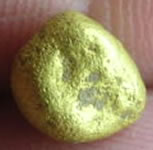 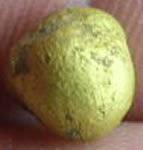 |
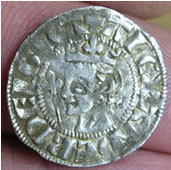 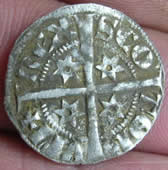 |
||
|
Gold
nugget probably Celtic Circa 1stC - reported as treasure to Colchester
museum and will be tested by British museum 2.17g,6.73mm |
1280 - 1286 Alexander III 2nd coinage Class 1
OBV ALEXANDER DEI GRA REV REX SCOTORUM - King of Scots (61) |
||
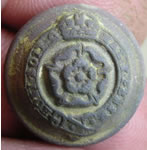 |
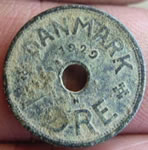 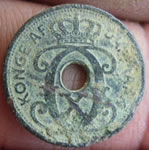 |
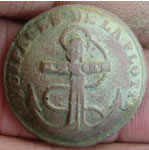 |
|
|
Military
button - not checked ref books yet |
1929
Danmark coin |
Italian
Navy ? |
|
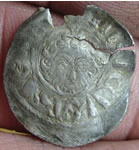 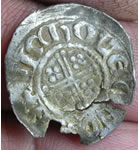 |
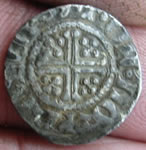 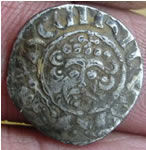 |
||
|
1242-1247 Henry III hammered silver penny Class 8b Canterbury Mint - Moneyer NICHOLE |
1199 King John hammered silver penny Class 5b 16.78mm,1.10g Mint NOR (Northampton) - Moneyer ROBERT T
|
||
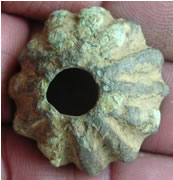 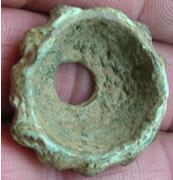 |
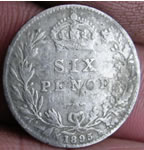 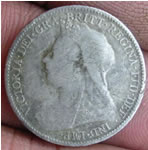 |
||
|
Roman
bronze dagger quillion 28.79mm dia,5.12g |
1895
Victorian milled silver 6 pence |
||
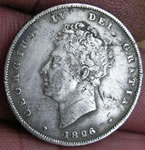 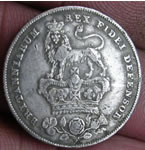 |
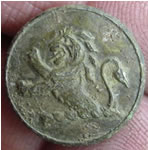 |
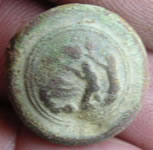 |
|
|
Great
condition 1826 George IV milled silver shillinh (12 pence)
|
19thC
livery button |
19thC
hunting button |
|
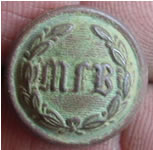 |
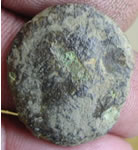 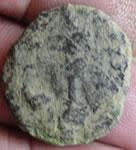 |
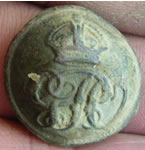 |
|
|
?? |
4thC
Roman - sent for ID 5.52g, 23.44mm |
Military
button - not checked ref books yet |
|
  |
|
||
|
1554
Mary hammered silver groat |
Early
bronze pin |
||
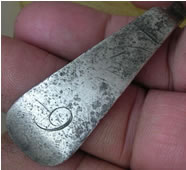 |
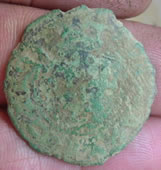  |
||
|
9th
Regiment of foot silver spoon ? |
15thC
Jetton - not
checked ref books yet
|
||
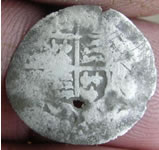 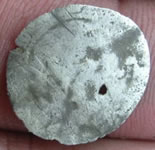 |
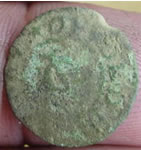 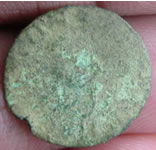 |
||
|
16thC
Elizabeth 1st hammered silver half groat made in to a pendant (65) |
1664
Joseph Gleson of Dedham Copper trade farthing |
||
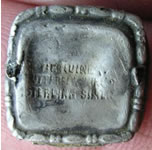 |
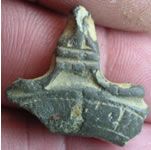 |
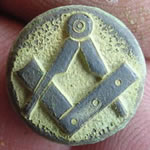 |
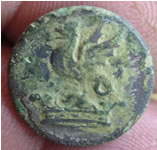 |
|
20thC
sterling silver locket |
17thC
bronze pocket sundial fragment |
Masons
button ? |
19thC
livery button |
 |
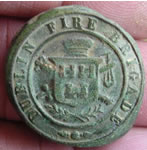 |
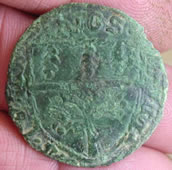 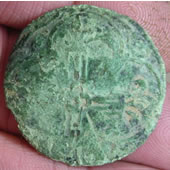 |
|
|
Navy
button - not checked ref books yet |
Dublin
fire brigade |
Stunning
early 15thC Jetton
not
in ref books
|
|
  |
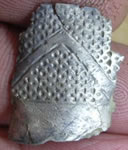 |
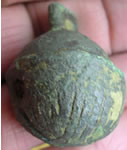 |
|
|
Late
medieval decorative mount with 2 integral lugs |
18thC
silver thimble fragment |
Nive
early decorated crotal beel |
|
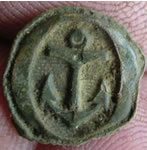 |
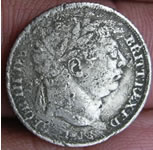 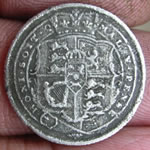 |
||
|
Navy
button - not checked ref books yet |
1818
George III milled silver sixpence |
||
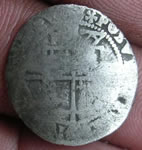 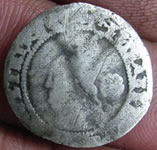 |
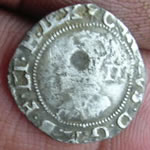 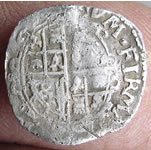 |
||
|
1577 Elizabeth 1st hammered silver 3 pence - 3rd issue Eglantine mintmark |
1643-4 Charles 1st hammered silver half groat (2 pence) Worcs or Shrewd mint (67) |
||
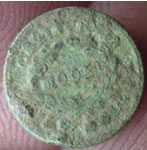 |
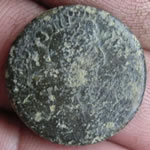 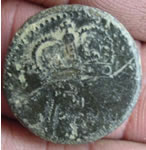 |
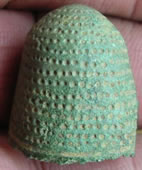 |
|
|
Victorian
'model' farthing |
1696
Willaim III gold guinea coin weight |
16thC
bronze thimble |
|
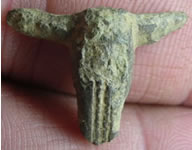  |
|||
|
1stC
Roman Dolphine type fibula brooch |
|||
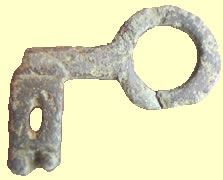 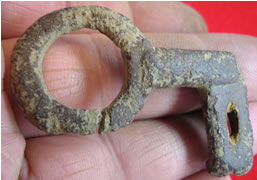 |
|||
C 10thC Saxon key |
|||
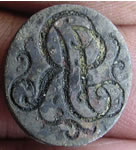 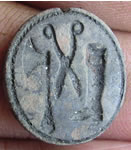 |
|||
Georgian fob seal |
|||
 |
|||
